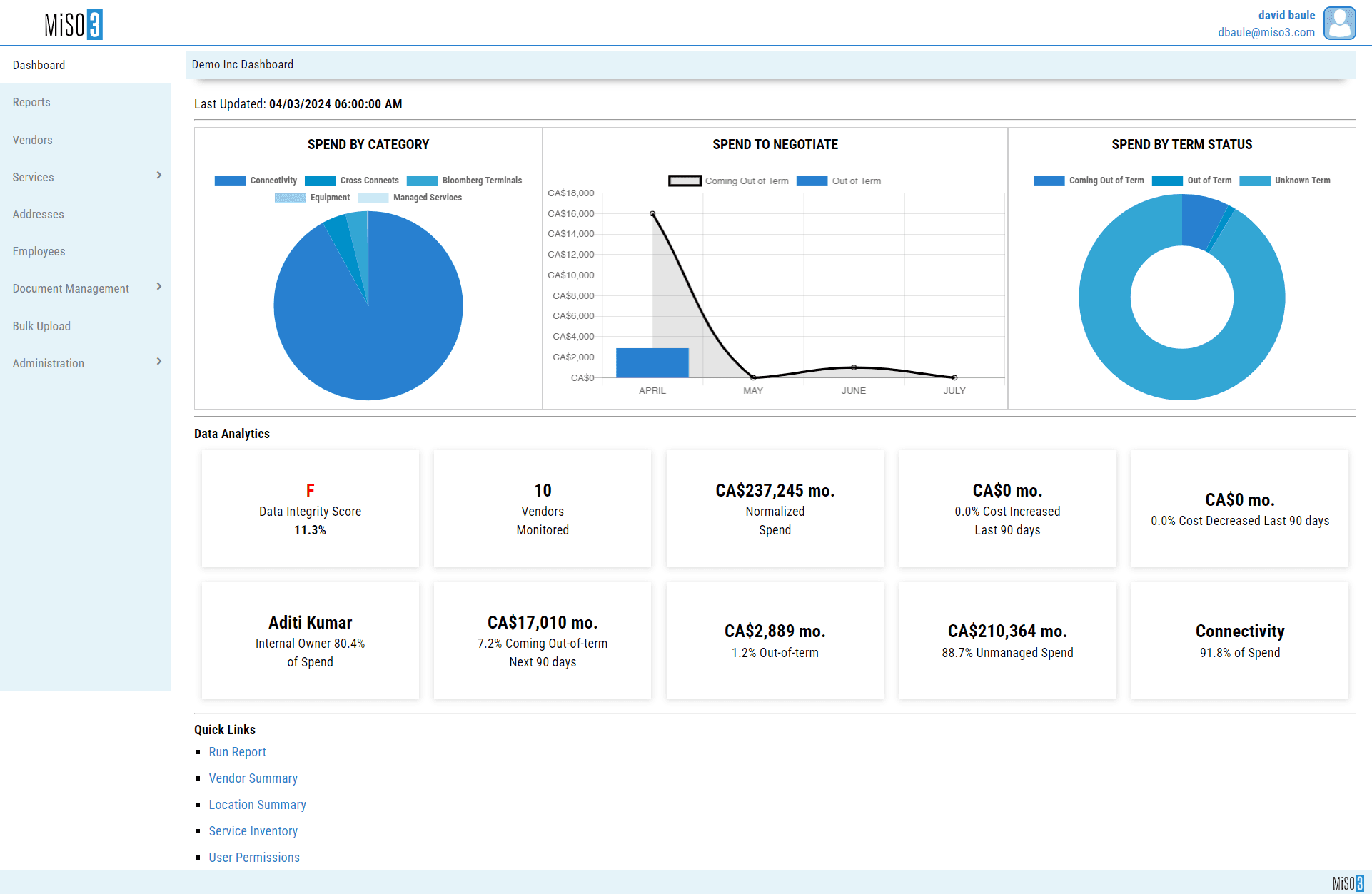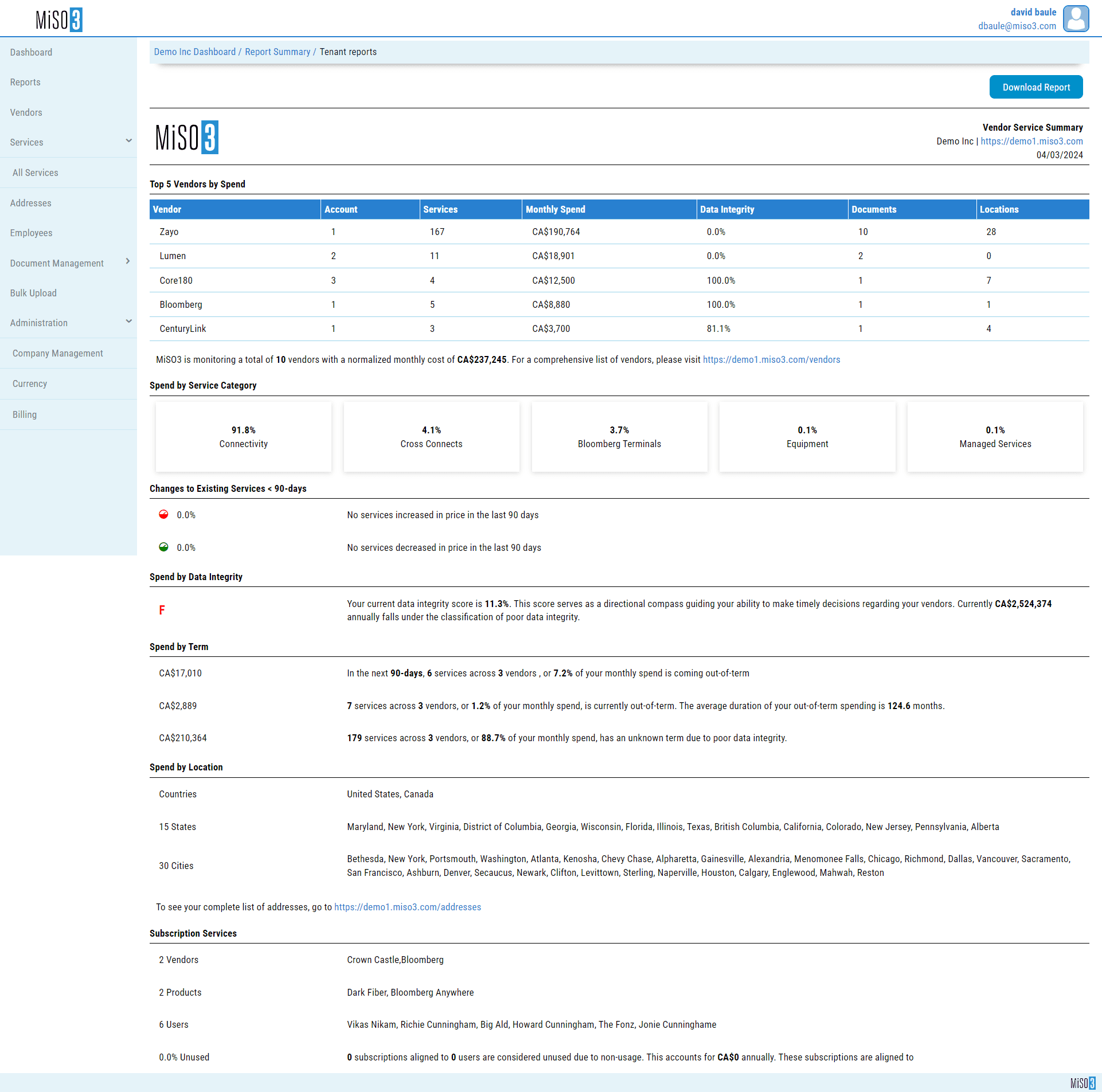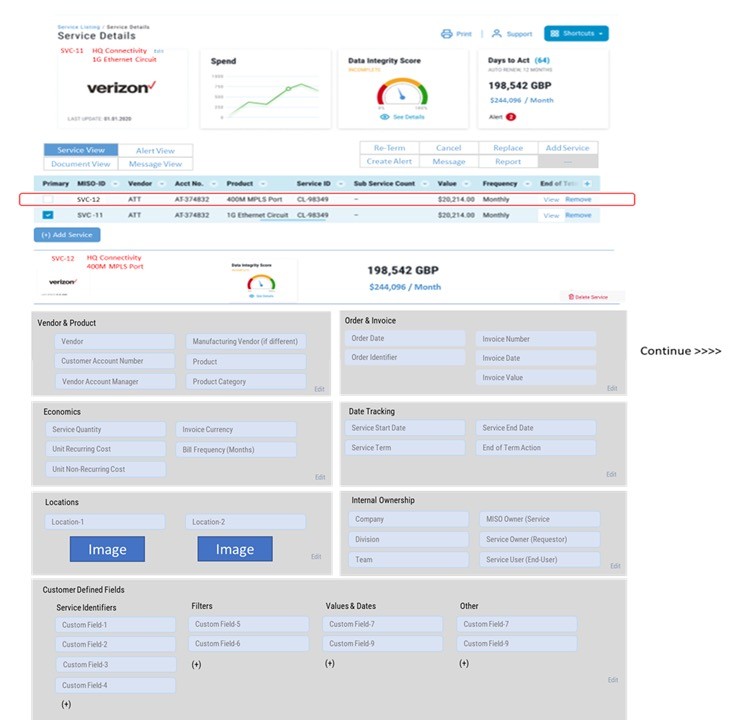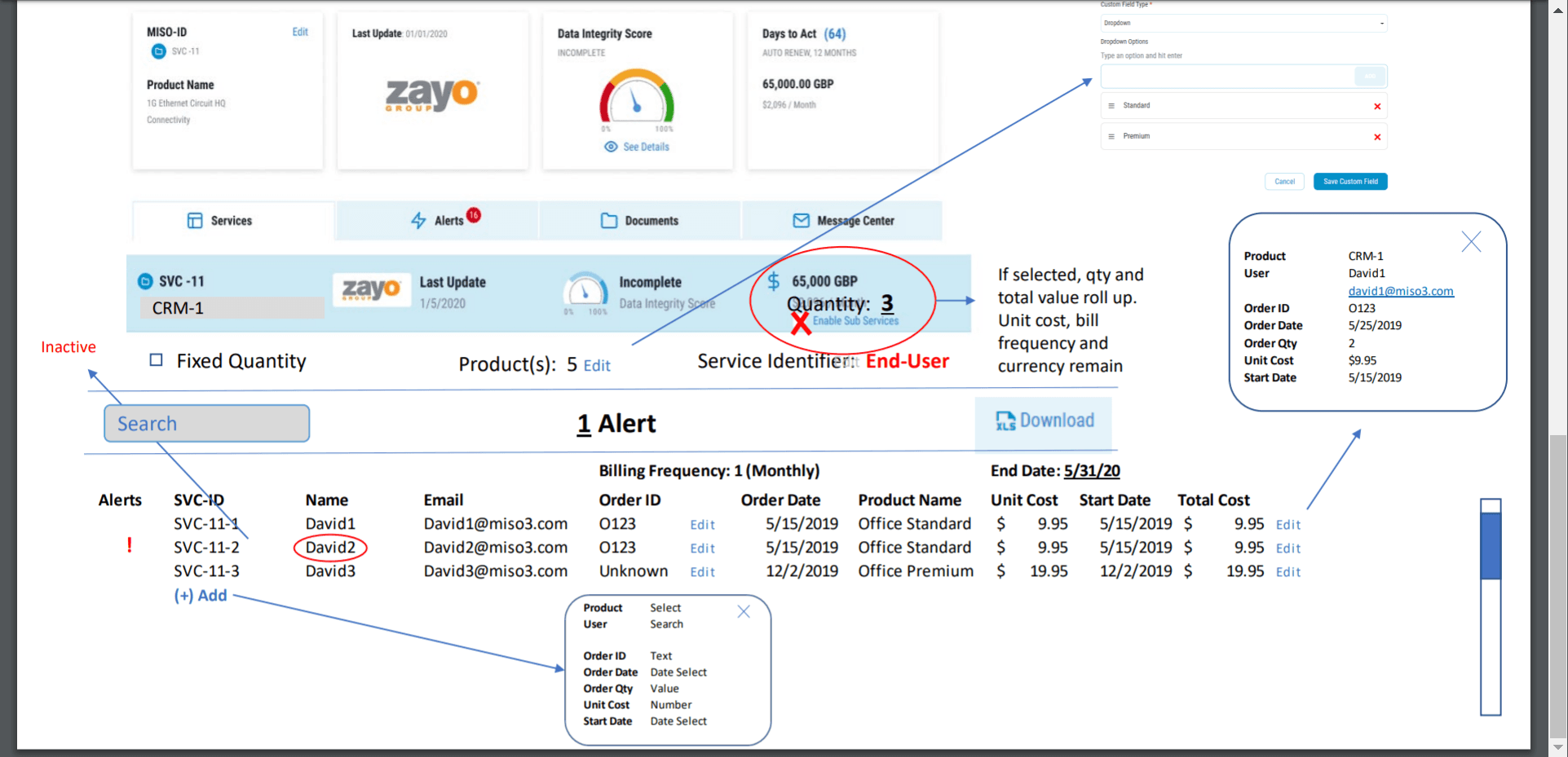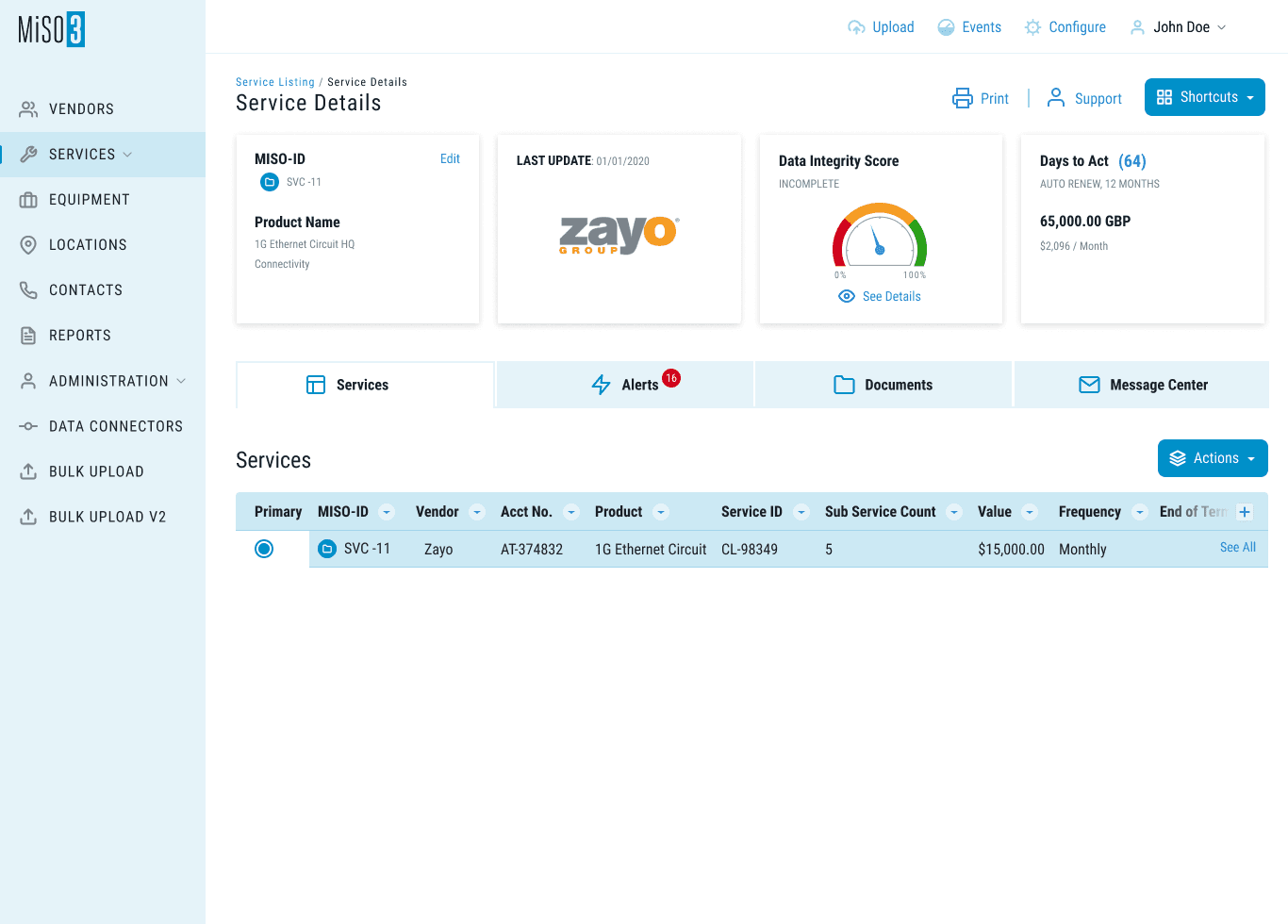Miso3
Technology/Start Up
Results
Platform became the source of truth for vendor usage and spend Internal teams used reports to identify over $150,000 in annual software redundancies Finance lead remarked: “We can finally align our budget to actual usage. We’ve never had that clarity.” Helped transform audits from a manual, frustrating process into a strategic cost-saving opportunity
Link
MISO3 Vendor Management – Cut Audit Prep by 70% and Tripled Adoption
Project: SaaS redesign for telecom vendor visibility
Outcome: Reduced audit prep from 20+ hours to 6; tripled user adoption
Client: B2B services firm using MISO3
Role: Product Designer & UX Strategist (sole designer)
Team: CEO, 2 Engineers, 1 Client Success Lead
Duration: 12 months
TL;DR
I redesigned a vendor management platform to reflect users’ existing spreadsheet workflows—cutting audit prep time by 70%, aligning ownership on 91% of subscriptions, and increasing product adoption from 28% to 84%.
Outcome / Problem Statement
The company couldn’t track over two dozen telecom vendors effectively.
65% of subscriptions lacked clear ownership
70% of audit time was spent compiling, not analyzing
MVP adoption remained low—users defaulted to spreadsheets
Goal: Replace spreadsheet chaos with a centralized tool that matched how users already worked—without forcing unnatural changes.
Users and Needs
Users were finance and operations staff managing telecom contracts. They needed:
Quick access to vendor usage and renewal info
A familiar, low-friction way to input and manage data
Reports that reflected real usage—not just paperwork
Users weren’t rejecting the product—they were rejecting workflow disruption.
My Role and the Team
As the sole designer, I led UX strategy, UI design, and validation:
Conducted user interviews and workflow mapping
Created interactive prototypes to test behavior-driven flows
Collaborated with engineers on UI logic, validation, and data inputs
Partnered with Client Success to monitor post-launch feedback
Constraints and Process
Constraints:
Users highly dependent on spreadsheets
Low tolerance for input friction
Platform had to support audit-readiness at any moment
Process:
Interviewed users and mapped their Excel workflows
Audited MVP usage logs and error trends
Designed spreadsheet-style UI with real-time validation
Built mid- and hi-fidelity prototypes with inline editing and paste support
Tested key flows and rolled out guided onboarding
Design and Iteration Highlights
Initial Design:
Form-heavy UI, structured fields
Feedback:
“I already track this in Excel. Why do it twice?”
Redesign:
Spreadsheet-style grid with keyboard shortcuts
Paste-from-Excel, inline edits, real-time validations
Smart suggestions and usage lookups from live data
Context-aware reports generated directly from user inputs
Result: The familiarity of Excel, with the power of a SaaS platform.
Results (Before vs After)
Metric | Before | After | Change |
|---|---|---|---|
Audit Prep Time | 20+ hours | 6 hours | -70% |
Ownership Alignment | 35% | 91% | +160% |
Monthly Active Users | 28% | 84% | 3× increase |
Spreadsheet Dependency | High | Minimal | Significantly reduced |
Report Accuracy (Rated) | Low | 4.8 / 5 | Substantial improvement |
“We can finally align our budget to actual usage. We’ve never had that clarity.”
— Finance Lead
What Worked
Familiar Interface: Spreadsheet-style grid lowered adoption barriers
Smart Validations: Prevented duplicate, outdated, or invalid entries
Real-Time Reporting: Data-driven insights, not just static exports
Onboarding Flow: Guided first-week setup improved early engagement
Reflection
Biggest Lesson:
We weren’t competing with spreadsheets—we were extending them.
Success came not from forcing change, but designing into users' existing behaviors.
Key Insight:
Technical improvements don’t guarantee adoption—friction determines value perception.
Next Steps
Add bulk import with preview and conflict resolution
Build role-specific dashboards for finance, operations, and leadership
Integrate Slack alerts for upcoming renewals and audit flags
